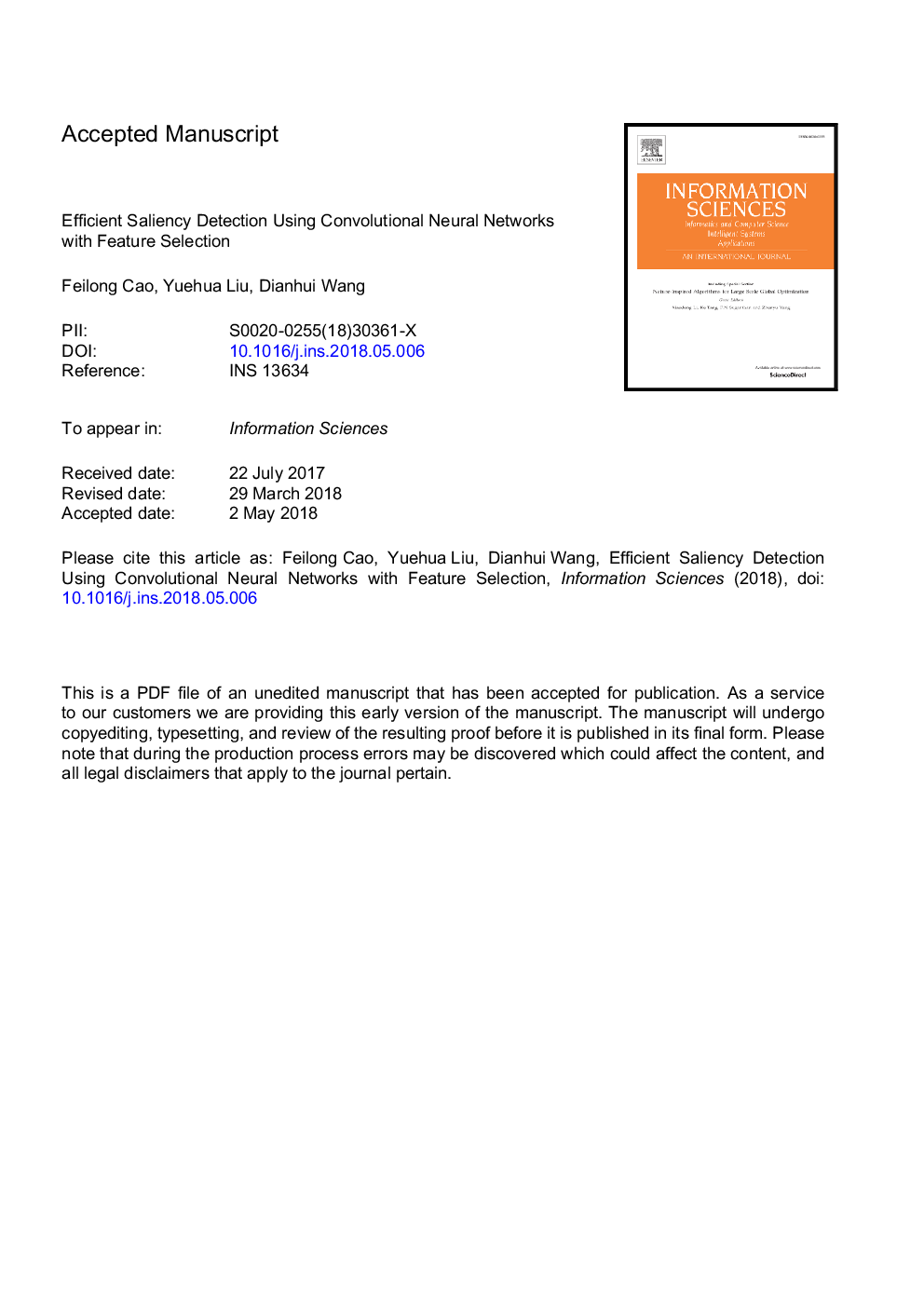| Article ID | Journal | Published Year | Pages | File Type |
|---|---|---|---|---|
| 6856349 | Information Sciences | 2018 | 29 Pages |
Abstract
Saliency detection is a fundamental problem in computer vision tasks. With the advent of convolutional neural networks (CNNs), computational models for salient object detection have evolved from relying on handcrafted features to high-level, deep contrast information. However, existing approaches to saliency detection rarely conduct an in-depth analysis of CNN features. This study discovers that a promising saliency map can be learned from low-, middle-, and high-layer feature maps. Moreover, only certain selected feature maps can facilitate improvement of the results. Those maps exhibiting significant similarities with ground truths contain increased contrast information and should be selected. These discoveries have motivated the design of our saliency detection system. For unknown ground truths, we construct a deep CNN to obtain the approximate salient area as the ground truth substitute for feature map selection. Thereafter, a CNN architecture with three convolutional layers is constructed on top of all selected feature maps to learn their deep contrast information, directly yielding improved saliency maps. The experimental results demonstrate that the proposed method significantly outperforms competing approaches on three widely used datasets.
Related Topics
Physical Sciences and Engineering
Computer Science
Artificial Intelligence
Authors
Feilong Cao, Yuehua Liu, Dianhui Wang,
